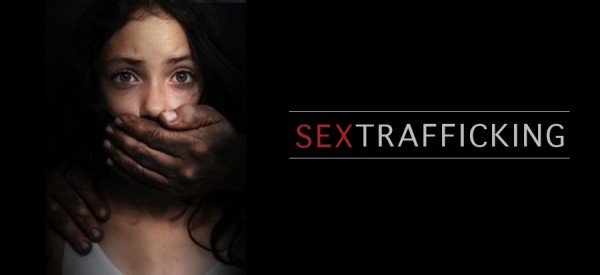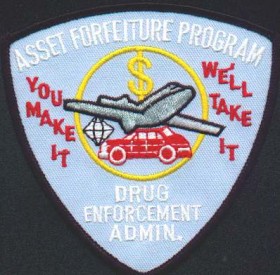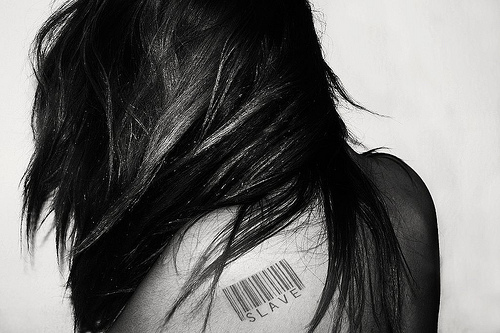
After several years of working in nonprofit agencies that take a harm reduction approach to working with drug users and sex workers, I’ve observed many similarities between the war on drugs and the war on trafficking. As the drug war has lost popularity, the war on trafficking has gained momentum. Both the war on drugs and the war on trafficking are housed within the criminal justice system, operating through punishment and incarceration. Both wars seek to eliminate their abstract opponents by attacking communities of drug users and sex workers, composed mainly of poor people of color.

Increased Sanctions
One way in which both the war on drugs and the war on trafficking operate is through the use of increased sanctions. The criminal justice system imposes harsh penalties on drug and sex related crimes, which in turn leads to mass incarceration, blocking upward mobility for those targeted. The best known example of this phenomenon is the crack versus cocaine disparity. This discrepancy punishes crack cocaine users, most commonly black people, with mandatory minimum sentencing many times longer than convicted powder cocaine users, most commonly white people, for an equivalent amount of what is chemically the same drug. This sentencing guideline continued for twenty five years until Congress passed the Fair Sentencing Act of 2010. The Act did not eliminate the disparity between sentences for crack and cocaine trafficking, but it did reduce the crack versus cocaine sentencing ratio from 100:1 to 18:1. It also eliminated the mandatory minimum sentence for crack possession.
In 2015, President Obama signed the Justice for Victims of Trafficking Act. As the Anti-Drug Abuse Act did with drug charges, this piece of federal legislation created mandatory minimums for trafficking-related charges. The California state legislature passed comparable anti-trafficking legislation in 2013, and states across the nation are now adopting similar laws. California’s Proposition 35 increases police surveillance of the sex trade and funnels money and resources into the criminal justice system rather than to victims of trafficking and service providers by redefining crimes and increasing penalties.
As Melissa Gira Grant observes, Prop 35 redefines trafficking in a way that could potentially target anyone involved in the sex trade. Prop 35 also increases penalties for trafficking-related charges to include large fines of up to $1 million, prison sentences ranging from 5 years to life, and sex offender registration. As a result of Prop 35 and similar legislation, sex workers are often charged with trafficking charges in addition to prostitution when they engage in consensual adult sexual encounters for money. Last year, I met with a 20-year-old woman who’d been charged with pandering as well as prostitution because she worked in solidarity with a 17-year-old; she’d formed this partnership with her coworker without knowing she was underage to keep them both safe.
Another notable sanction that both the war on drugs and the war on trafficking use as a tool of control and punishment is asset forfeiture. By law, when police officers perceive a person’s belongings are involved in a crime, they seize the item and sell it. Asset forfeiture often occurs during drug raids and prostitution stings. Police seize cash, cars, and homes. Impound companies charge fines for holding vehicles, and many sex workers, sex work clients, and drug users do not have the means to get their cars out of impound lots. What ends up happening most of the time is that law enforcement agencies sell the impounded cars, keep the money, and use those funds to make more drug and prostitution-related arrests.
 Paraphernalia
Paraphernalia
Drug paraphernalia is illegal in many states, and possession carries different penalties depending on which drugs they are meant to be used with. For example, a marijuana pipe often triggers a ticket and a fine, while a syringe triggers several days in county jail, including a booking fee. Police officers use paraphernalia as probable cause to search a person for drugs. Many people do not know their rights, and police will often use paraphernalia to justify a search of their environment as well as their person, despite actually needing a warrant to conduct such searches.
Similarly, condoms are considered evidence of prostitution in some jurisdictions either by law or in practice. In 2013, New York reformed a law that established possession of more than three condoms as evidence of prostitution. Opponents of the law stated that criminalizing condoms is bad public health policy because it discouraged people from carrying and using condoms. Despite the law’s reform, police still threaten to use condoms as evidence when arresting someone they perceive as a sex worker in an attempt to get them to admit guilt. During Know Your Rights trainings which the last organization I worked at provides to sex workers, participants would often tell me that the officer who arrested them stated that possession of so many condoms was probable cause for a prostitution arrest. But that “evidence” was not formally submitted on their ticket because the law in Colorado does not actually recognize condoms as evidence. Such practices push drug use and sex work, as well as sex trafficking, underground, creating more violence and isolation by depriving people of the means to reduce risks in their drug use and sex work.
Federal Funding Bans
The President’s Emergency Plan for AIDS relief (PEPFAR) contains both national and international strategies aimed at ending the AIDS epidemic. PEPFAR imposes bans on federal funding dollars, limiting the impact that harm reduction agencies can have on preventing the spread of HIV/AIDS. These funding bans include strictures on providing federal dollars to syringe exchange programs as well as organizations that support the decriminalization of prostitution. Such funding restrictions impede community-based organizations’ ability to provide sexual health services and education to drug users and sex workers.
In 2013, The American Foundations for AIDS research (amfAR) released a fact sheet calling on the federal government to lift these bans. The fact sheet outlines how lifting federal funding restrictions on syringe exchanges and sex worker-positive organizations would be more cost effective to the U.S., as harm reduction and prevention are significantly cheaper than providing health care to people with HIV—one syringe costs an organization 10 cents whereas viral treatment costs thousands of dollars over a lifetime. In 2013, the U.S. Supreme Court found the anti-prostitution pledge to be unconstitutional. However, the federal government still withholds its funding dollars from sex worker-positive organizations, directing them towards abstinence-based organizations instead. In 2014, the government renewed the federal funding ban on syringe exchanges.
Federal funding bans extend beyond limiting organizations’ sustainability and growth to imperiling individual health and prosperity. People with drug felonies and sex offenses are denied access to federal assistance, including food stamps and section 8 housing. This creates a cycle of release and reincarceration as felons are not able to meet their basic needs after re-entering society. People with drug and prostitution-related charges on their records often return to the street economy in order to take care of themselves and their families, violating their parole/probation and sometimes catching additional charges. Tax payers’ dollars are spent funneling people in, out, and back into jails and prisons rather than helping people with felonies become stable.

Disproportionate Effects on Marginalized Communities
Michelle Alexander, author of The New Jim Crow, a primer on racial disparity in the drug war, writes that “[a]ny movement to end mass incarceration must deal with mass incarceration as a racial caste system, not as a system of crime control.” The 13th Amendment of the U.S. constitution states that slavery is illegal except as punishment for a crime. But after slavery was outlawed, many states adopted Jim Crow laws, perpetuating the mass arrest of black men in order to utilize their prison labor. Shortly after Jim Crow laws were overturned the war on drugs began, and it continues to do the work Jim Crow laws did by incarcerating huge numbers of black men.
Dr. Carl Hart, a neuroscientist who specializes in debunking drug war myths, writes about the role that media sensationalism plays in perpetuating drug war hysteria. Anti-meth ads show extreme cases of meth use and declare that all meth use looks like that. In fact, that is what extreme sleep deprivation and malnutrition look like. Anti-trafficking adds also use sensationalism to incite pity and fear in the American public. Foreign children are shown trapped in cages, despite the fact that traffickers use fraud and coercion much more commonly than force. Lurid images like these do little to educate anyone about the nuances of drug use and trafficking in the sex industry, but they do plenty to affirm people’s existing prejudices.
Media attention surrounding the war on trafficking warns American parents to keep close watch on their children and stay wary of men of color. This is reminiscent of media surrounding the war on drugs in the 1980s and 1990s. During the 80s, the spotlight turned to black men and welfare mothers, ignoring drug use in suburban white neighborhoods. Law enforcement shifted most of its resources to monitoring poor inner-city neighborhoods. This colored portrayal of drug use led to the imprisonment of high rates of black people in America, much higher than any other race. The media also promotes racial stereotypes of sex workers and sex trafficking victims. Law enforcement uses racial profiling when arresting black female sex workers and “saving” white young women in the sex trade. Thus, poor women of color are arrested and incarcerated at much higher rates for prostitution-related crimes. Instead of being treated with compassion, sex trafficking survivors are often arrested, criminalized and mistreated by the criminal justice system. Even attempts at diversion—treating sex workers as “victims” instead of “criminals”—usually leave workers with open records and still conduct them through the criminal justice system. And being arrested leads to deportation for migrant trafficking victims.
In 2013, Monica Jones, a black transgender woman, was arrested for prostitution while accepting a ride home. She was found guilty, but she appealed her case in the Arizona State Court, drawing attention to police profiling of transgender women of color as sex workers. Trans women are unlikely to be hired by employers in the legitimate economy, which often forces them into black market work. But even when trans women of color are breaking no laws, they are often arrested for simply “walking while trans.” After prostitution and drug arrests, transgender women who have not had gender reassignment surgery (which many transgender people do not get done as it is both invasive and expensive) are booked into men’s pods, leaving them vulnerable to sexual harassment and physical assault. Furthermore, court-mandated treatment centers as well as many community-based nonprofits deny care to transgender people.
Sex solicitation arrestees present disparities in gender as well as race. For many years, sex buyers were penalized less severely than sex sellers. The recent emergence of End Demand initiatives that seek to harshly punish and shame sex buyers has reduced this gender gap somewhat. However, demand cannot be “ended” without cutting off supply, meaning that sex workers are still being penalized economically if not legally. And sex workers are still being arrested more often than sex buyers. At a Demand Abolition meeting in September 2013, a Vice Sergeant from the FBI’s Innocence Lost Task Force told attendees that their arrests were composed of 60% sellers that year.
Sex and drug sellers are punished for selling pleasure to white middle and upper class consumers. Then, white middle and upper class corporate workers profit off their punishment through industries such as private prisons and for-profit treatment centers. And as long as people are poor and have few options, they will turn to underground work to survive, feeding these industries.

Moving forward
Today, many people refer to human trafficking as “modern day slavery.” Others within the anti-trafficking movement disagree with this language, arguing that human trafficking does not have the institutional backing that defined slavery in the old American South. Prison abolition activists recognize the institutional backing given to the criminal justice system of incarceration, which holds people against their will and reaps the benefits of their unpaid or underpaid labor. Mass incarceration is also called “modern day slavery.” No matter what camp you belong to, it’s easy to see that we cannot eradicate slavery-like conditions with slavery-like conditions. We cannot incarcerate exploitation and violence away when incarceration itself is exploitative and violent.
The wars on drugs and sex trafficking have had negative public health consequences including the exacerbation of the HIV/HCV epidemics, fatal drug overdoses, and the proliferation of post-traumatic stress disorder. Community members and activists have been calling for an end to the war on drugs for decades, and as a result, public health solutions to drug abuse have begun to emerge by way of drug policy reform and criminal justice reform. The Law Enforcement Assisted Diversion (LEAD) program is one of the most notable alternatives to incarceration for drug possession and sex work in the U.S. Based out of the Belltown Neighborhood in Seattle, Washington, the LEAD program is a pre-booking diversion program that seeks to reduce recidivism rates and save public costs. LEAD released a two year evaluation report in 2014, outlining the success the program has had in achieving these goals. The program aligns law enforcement with harm reduction outreach workers, and unlike most other diversion programs, doesn’t set unreasonable conditions like medication or treatment compliance for clients to get services like housing. LEAD proves that meeting a person’s basic needs reduces recidivism and increases public health.
Another drug policy reform measure that twenty states throughout the U.S. support is some form of decriminalization of drug paraphernalia. One alternative is an affirmative defense to syringe possession. Essentially, this policy recognizes that people who are connected to community care and harm reduction materials—clean syringes—should not be punished for possessing the very materials that the organization gives them. Policies that exempt participants of community-based nonprofits from arrest allow for the proper disposal of syringes and ensure that police officers will not be stuck by used syringes during searches. This affirmative defense is a realistic goal activists can work for in their states while also advocating for the end of the drug war.
Activists can push for similar middle paths when approaching the war on trafficking while also advocating for the complete decriminalization of sex work. On the way to ending America’s ideological wars, municipalities across the U.S. should replicate LEAD programs in neighborhoods most affected by the war on drugs and the war on trafficking. Local governments should explore partial decriminalization of prostitution in ways that don’t decriminalize one party while further criminalizing another, such as adopting an affirmative defense to prostitution for sex workers accessing services from a recognized harm reduction organization. At the same time, court systems can employ alternative justice methods such as restorative and transformative justice models. Finally, alliances between drug policy reform advocates and sex worker rights advocates need to be made to ensure the United States reduces its over-reliance on the criminal justice system.
Outstaing research and well written
“No matter what camp you belong to, it’s easy to see that we cannot eradicate slavery-like conditions with slavery-like conditions. We cannot incarcerate exploitation and violence away when incarceration itself is exploitative and violent.”
Boom. Great line. This was super powerful. I have done research on the War on Drugs, but I do have a weak understanding of the War on Human Trafficking. The parallels you draw are very nuanced and important work. The narratives of these “wars” rely heavily on posturing the victims as tragic victims that need to be saved, but they don’t actually care about the humans that they push into never ending cycles of poverty. Amazing.
“Sex and drug sellers are punished for selling pleasure to white middle and upper class consumers. Then, white middle and upper class corporate workers profit off their punishment through industries such as private prisons and for-profit treatment centers.”
We have been sounding the alarm about this since the inception of “trafficking courts” (née “prostitution courts”) in NYC. I see judges, district attorneys, and social service providers getting a lot of press around their altruistic efforts, as well as funding for their trafficking programs and probably promotions, too. Meanwhile, sex workers in the courts get nothing but an ACD on their prostitution arrest.
Let me be clear: sex workers get relief from the arrest and conviction on prostitution charges––something law enforcement and the courts created in the first place. The courts provide a remedy to themselves. 1-1=0.
Yet, look at everyone who is actually profiting off of the courts, i.e. advancing their political agenda, getting press for their non profits, being honored at bar association dinners. Must be nice.
Great article!! It feels quite comprehensive without being too in-dept. It does a really good job of illustrating the structural violence involved in both wars. However, I do think it is missing a comment on male sex-workers (especially migrant), who are often ‘invisible’ and thought to not experience violence, which is in turn part of the problem. Also, I am interested in when these two wars are combined, such as if a sex worker is incarcerated for drugs and sex.
We do really need more male sex worker and migrant perspectives on TAS, yes, and we’ll be actively looking for contributors who identify with both or either group. As for when the drug war and the war on sex workers collide, here’s a great piece by my old friend Melissa Gira Grant about that sort of structural violence in the prison industrial complex, which, full disclosure, I was quoted in:
http://www.vice.com/read/why-did-this-woman-who-was-arrested-in-a-prostitution-sting-die-in-a-florida-jail-508
Interesting article. These 2 wars are endless. Prostitution is better to control than forbid. My friends are working in http://uk.worldescortmap.com/ and worry that one day government decide to ban sex industry and they will be homeless. But it will not resolve the problem.